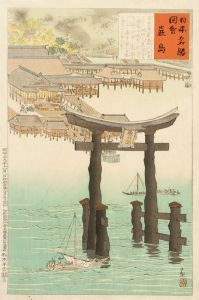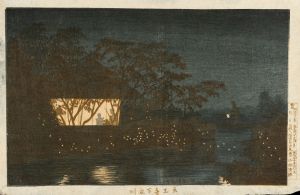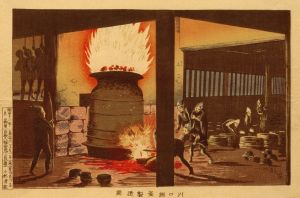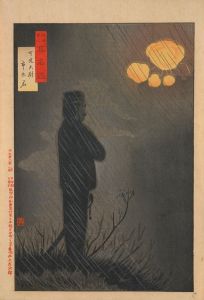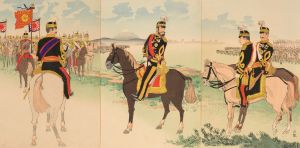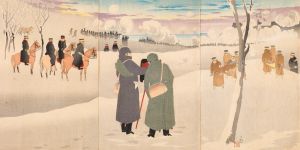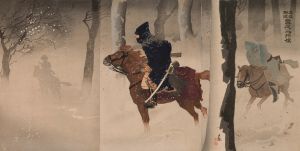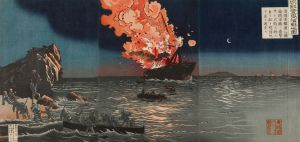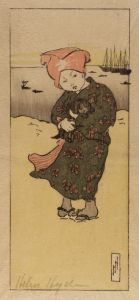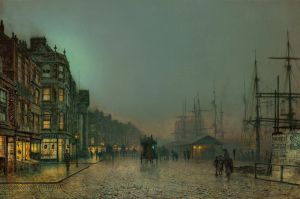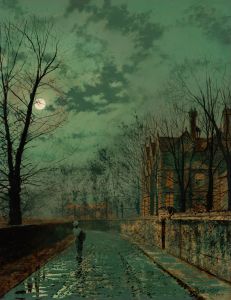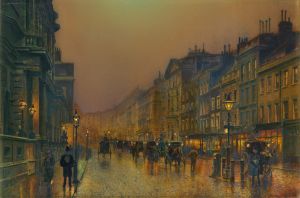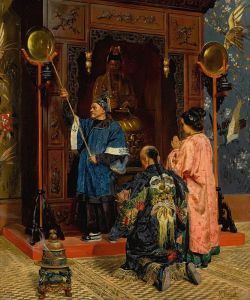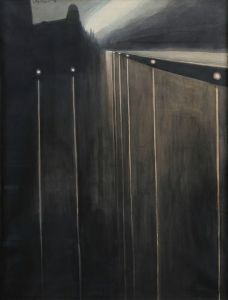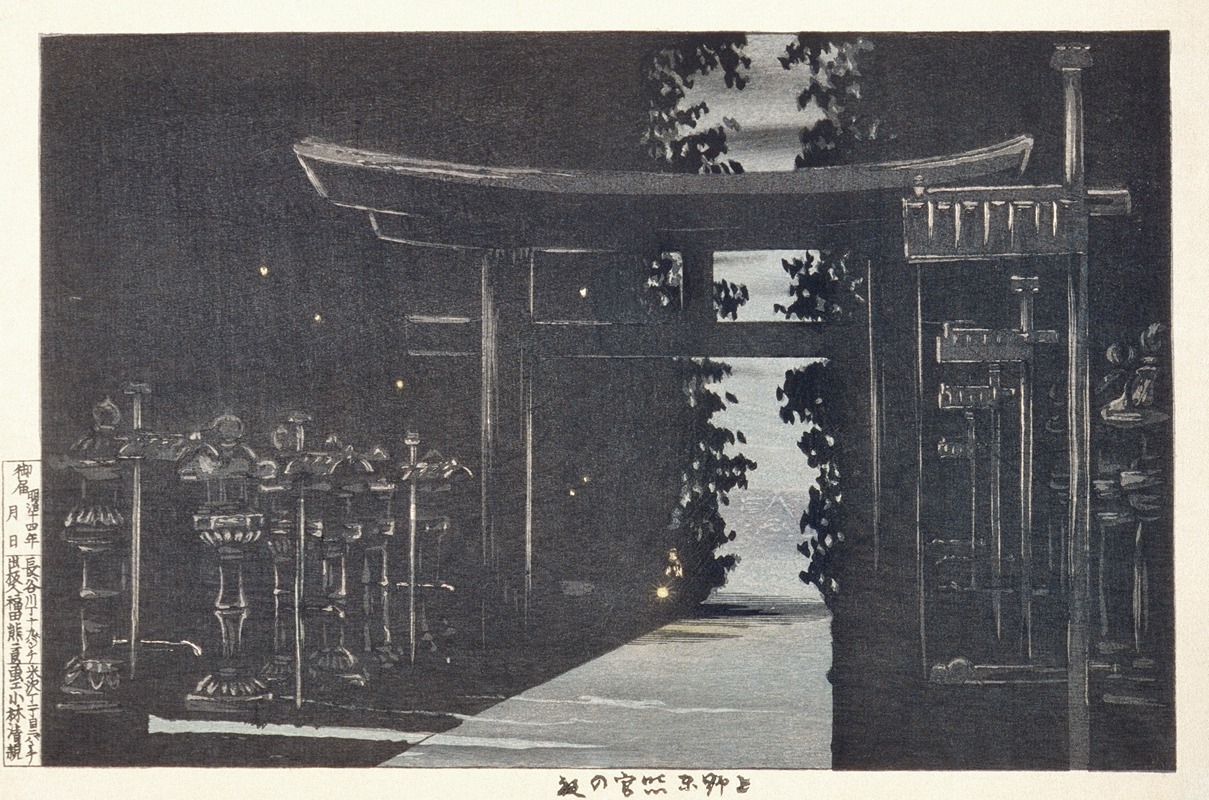
Evening at Tōshōgū Shrine, Ueno, Tokyo
A hand-painted replica of Kobayashi Kiyochika’s masterpiece Evening at Tōshōgū Shrine, Ueno, Tokyo, meticulously crafted by professional artists to capture the true essence of the original. Each piece is created with museum-quality canvas and rare mineral pigments, carefully painted by experienced artists with delicate brushstrokes and rich, layered colors to perfectly recreate the texture of the original artwork. Unlike machine-printed reproductions, this hand-painted version brings the painting to life, infused with the artist’s emotions and skill in every stroke. Whether for personal collection or home decoration, it instantly elevates the artistic atmosphere of any space.
"Evening at Tōshōgū Shrine, Ueno, Tokyo" is a woodblock print created by the Japanese artist Kobayashi Kiyochika (1847–1915). Kiyochika is widely regarded as one of the most innovative printmakers of the Meiji era (1868–1912), a period marked by rapid modernization and cultural transformation in Japan. His works are celebrated for their unique blend of traditional ukiyo-e techniques and Western-inspired elements, particularly in the use of light and shadow.
This particular print depicts the Tōshōgū Shrine, located in Ueno, Tokyo, during the evening. The shrine, dedicated to Tokugawa Ieyasu, the founder of the Tokugawa shogunate, is a significant cultural and historical site. Built in 1627, it is known for its ornate architecture and enduring legacy as a symbol of the Tokugawa period. Kiyochika’s depiction captures the tranquil atmosphere of the shrine at dusk, emphasizing the interplay of light and shadow, a hallmark of his artistic style.
Kiyochika’s work often reflects the changing urban landscape of Tokyo during the Meiji era, as traditional structures coexisted with modern innovations. In "Evening at Tōshōgū Shrine," he employs a subdued color palette and dramatic contrasts to evoke a sense of quiet introspection. The use of light, possibly influenced by Western techniques such as chiaroscuro, highlights the lanterns and other illuminated elements, creating a striking visual effect against the darkened surroundings.
This print is part of Kiyochika’s larger body of work, which frequently explored themes of modernization, nostalgia, and the passage of time. While many of his prints document the transformation of Tokyo into a modern metropolis, "Evening at Tōshōgū Shrine" stands out as a more contemplative piece, focusing on a historic site that remained a connection to Japan’s past amidst the rapid changes of the Meiji period.
Kiyochika’s prints, including this one, are often categorized as part of the "shin-hanga" movement, though his work predates the formal establishment of this genre. His innovative approach to composition and lighting has earned him recognition as a pivotal figure in the transition from traditional ukiyo-e to modern Japanese printmaking.
Today, "Evening at Tōshōgū Shrine, Ueno, Tokyo" is appreciated not only for its artistic merit but also as a historical document that provides insight into the cultural and urban landscape of Meiji-era Japan. The print is held in various collections, including museums and private holdings, and continues to be studied and admired by art historians and enthusiasts worldwide.





